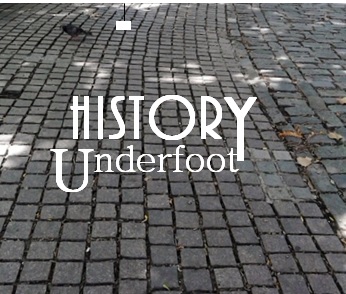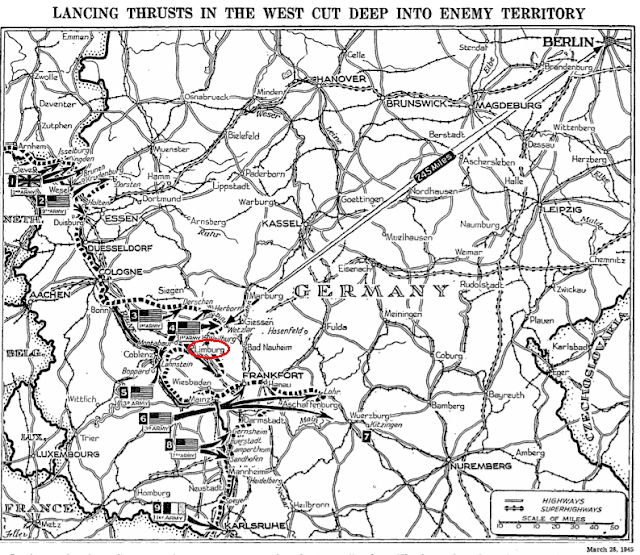Part 3 in the series
about Washington Terrace, a small street at 186th Street in upper Manhattan that is off the
regular street grid. See Part 1: Murders. Part 2: Survivor.
Gemstone dealer Samuel
Lyons cut his daughter Sophia out of his will.
His decision even made the papers. According to the New York Times, he considered her behavior “unbecoming and unloving,” and he split his estate among his other three children.
His decision even made the papers. According to the New York Times, he considered her behavior “unbecoming and unloving,” and he split his estate among his other three children.
But, he didn't cut Sophia out of the estate completely. He instructed his oldest child, Isabel, to give
something to Sophia after his death, but to keep the value under $10. Even in the early 1900s, $10 wasn't much of an inheritance.
We needn’t worry too much
about Sophia. First, she was an adult and she was not dependent on her father’s money.
And second, her father changed his mind a few years later and put Sophia back
into his will. She still didn't get an equal share in the estate with her siblings, but Samuel left Sophia three paintings that hung in his dining room on Washington Terrace in upper Manhattan. The artist was George W. Platt of Denver.
Washington Terrace at 186th Street these
days might not seem like a place where businessmen hang artwork in their dining rooms, but when the half-block stretch first opened in the early 1900s, it was a new street in a desirable neighborhood, and professionals who worked downtown lived there.
 |
| Washington Terrace in 2017. Photo by PBM, used with permission |
What caused the fall-out
between gemstone businessman Samuel and his daughter Sophia?
Perhaps Sophia's disinheritance was simply one more difficulty following a decade of difficulties for the family. The 1890s started out with the tragic death of Edgar, Samuel’s son and Sophia’s younger brother. The decade ended with the death of Samuel’s wife and Sophia’s mother.
Perhaps Sophia's disinheritance was simply one more difficulty following a decade of difficulties for the family. The 1890s started out with the tragic death of Edgar, Samuel’s son and Sophia’s younger brother. The decade ended with the death of Samuel’s wife and Sophia’s mother.
And, in the middle of the decade, there were the family's bicycle troubles.
 |
| The Miriam and Ira D. Wallach Division of Art, Prints and Photographs: Art & Architecture Collection, The New York Public Library. "Ride Sterling bicy[cles]." The New York Public Library Digital Collections. 1895 - 1917. |
In 1894, Samuel’s son Theo
married Mabel, a Manhattan millionaire’s daughter, and Mabel was into
bicycles. Bikes were the craze during the 1890s, and both Theo’s bride and his sister Isabel joined fad. Not only did people love to ride, but bicycle racing was a
popular spectator sport too.
It wasn’t long before
Mabel’s interest in bicycles bothered her new groom. Theo
didn’t approve of her “acquaintances made while biking,” as reported in The World. Theo accused Mabel of
being “infatuated with the wheel” and with a wheeler named Charles Cafferty, a local
champ in the bike-racing circuit. Cafferty denied the accusation,
but after Theo divorced Mabel, the bike-racer married her.
While bicycle
drama upset Theo’s marriage, bicycling upset his sister Isabel too.
 |
| Art and Picture Collection, The New York Public Library. "Woman after falling from bicycle." The New York Public Library Digital Collections. 1896. |
While riding in their
uptown neighborhood on a spring day in 1897, Isabel hit a rut in the road and injured
her toe. Blaming the city for the rut, she filed a $10,000 lawsuit, though it didn't go well and the
case was thrown out of court.
His children rode their bikes around Manhattan, and Samuel rode the train out of the city. He took two trips each year out West to peddle precious stones.
The family gem business was headquartered in the original diamond district of New York City, on Maiden Lane
in lower Manhattan. In the 1900s, Lyons & Son was in the Diamond Exchange, a building especially made for gem dealers. It was built with extra-strong
floors to hold the heavy safes and with big windows for natural light that made
the gems sparkle. The building still stands today.
 |
| By Unknown - Real Estate Record and Builders' Guide: v. 53, no. 1366: May 19, 1894, Public Domain, https://commons.wikimedia.org/w/index.php?curid=52445068 |
It turns out that Lyons & Son had some financial issues in the 1890s. It wasn’t that the business lacked assets, but, rather, it lacked cash to pay the bills. Samuel sometimes bartered and traded his goods rather than selling them for money. He obtained land out West through trade, for example, and perhaps he traded some gemstones for the artwork in his dining room as well.
Fortunately, Samuel and
Theo convinced their creditors they could pay their bills in full if given some time, and their creditors were lenient with payment schedules.
It’s possible that on one
of his business trips to the West in the 1890s, Samuel Lyons obtained the
George W. Platt paintings – the artwork that would be Sophia’s inheritance.
The artist George W.
Platt didn’t always live in the West. He grew up in New York and then studied
art in Munich and Philadelphia.
Platt liked the trompe l’oeil technique
of creating an optical illusion, making it look like the objects in the painting
were actual, three-dimensional objects rather than painted renditions. The
American style of trompe l’oeil at the time often featured items from the Western states, such
as hunting game and hunting gear.
 |
| Trompe l'oeil piece by George W. Platt |
The trompe l’oeil
painting that was Platt’s most famous was called Vanishing Glories, and it
has apparently vanished itself. There is no known record of where it ended
up.
Platt himself ended up in
Denver, but that was after he taught at the Art Institute of Chicago and married one of his
students there. After the couple moved to Denver, Platt taught at the University of Denver and continued painting – mostly fruits and flowers as well as portraits.
I don’t know what
paintings by Platt that Samuel Lyons hung in his dining room and left to his
daughter Sophia. The history-hunter in me hopes one of them was the missing Vanishing Glories. But, I suppose
it’s more reasonable to guess that Samuel Lyons would have chosen still-life
paintings of food to hang in his dining room on Washington Terrace rather than
trompe l’oeil frontier scenes.
Whatever the paintings were in Samuel Lyons' dining room, the New York Times reported they were left for Sophia "as a mark of returned love to her" by her father.
Whatever the paintings were in Samuel Lyons' dining room, the New York Times reported they were left for Sophia "as a mark of returned love to her" by her father.
 |
| Still life by George W. Platt |
This happy ending ends the series on Washington
Terrace, a short street off the regular Manhattan street grid - a place where we discovered murder stories; a survival story; and this story of gemstones, bicycles, artwork, and reconciliation.
Sidenotes of interest:
- One creditor of Lyons & Sons was Jos. Frankel’s Sons, the firm that bought the famously unlucky Hope Diamond.
- Theo remarried after his father died, and he remained in the gem business. On a trip out West in the 1920s, he was robbed of $20,000 worth of his goods.
- Mabel, Theo's first wife, was the daughter of man who made a fortune in the cracker-making business. Watch for his story down the road on History Underfoot.
Sources are found here.






























